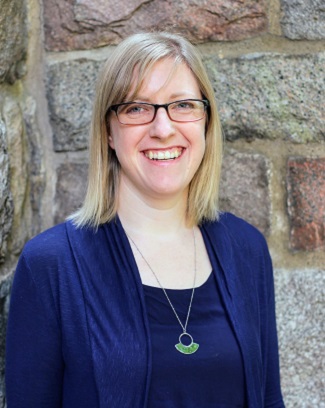Good Data, Good Awards
Published: 23 July 2018
Four new DOE Early Career Research Program award winners plan to use ARM measurements
In late June, 84 scientists around the country received Early Career Research Program awards from the U.S. Department of Energy (DOE).
The 54 awardees from universities will receive at least $150,000 a year for five years to further their research. The 30 recipients from national labs will receive at least $500,000 annually.
Four of the young scientists will use measurements from DOE’s Atmospheric Radiation Measurement (ARM) user facility.
They are: Susannah Burrows of Pacific Northwest National Laboratory (PNNL); Naruki Hiranuma of West Texas A&M University; Kerri Pratt of the University of Michigan; and ManishKumar Shrivastava of PNNL.
Started in 1989, ARM has mobile and fixed observatories in critical regions of the world that gather, process, and archive atmospheric data.
Here is a glimpse of the four, and the science they do:
The Effects of Sea Spray and Farm Soils

Susannah Burrows of PNNL has not made much use of ARM data in the past. But her early career project will rely on ARM measurements related to ice-nucleating particles (INP) in marine and agricultural locations.
When ice forms in clouds (in a process called ice nucleation), it can significantly change the radiative and microphysical properties of those clouds, affecting how much sunlight they reflect and how much precipitation they release.
Over the next five years, Burrows will look for explanations of how INP vary in the marine environment, where such particles can originate in sea spray, as remnants of microbes, or from other sources.
She and her team will look at and use ARM data from marine field campaigns they have mapped out, including Measurements of Aerosols, Radiation, and Clouds over the Southern Ocean (MARCUS, 2017 to 2018) and other globe-spanning shipboard, coastal, and aerial campaigns from both ARM and non-DOE sponsors.
For now, the campaigns selected include the Mixed-Phase Arctic Cloud Experiment (M-PACE, 2004); Indirect and Semi-Direct Aerosol Campaign (ISDAC, 2008); Marine ARM GPCI Investigation of Clouds (MAGIC, 2012 to 2013); ARM Cloud Aerosol Precipitation Experiment (ACAPEX, 2015); Macquarie Island Cloud and Radiation Experiment (MICRE, 2016 to 2018); and Southern Ocean Clouds, Radiation, Aerosol Transport Experimental Study (SOCRATES, 2018). Burrows may look at data from other ARM field campaigns.
She and her PNNL team will also collect new data at ARM’s Southern Great Plains (SGP) atmospheric observatory in Oklahoma. The idea is to learn more about the INP role agricultural soils may play if they are blown into the air.
“The final portion of the project will build on the first two,” says Burrows of her ultimate early career research goal, which is “to build a predictive understanding of INP concentrations as a function of aerosol abundance and characteristics.”
ARM-Aided Implications of Aerosol Physicochemical Properties

Naruki Hiranuma, a West Texas A&M University expert in advanced aerosol measurement techniques, will use ARM data to inform his early career work on microphysical atmospheric processes.
That includes investigating ice nucleation in his Canyon, Texas, atmospheric and aerosol measurements laboratory. Part of his funding will go toward a one-of-a-kind chamber that makes artificial clouds by mixing aerosols under conditions controlled for temperature, humidity, pressure, cooling rate, and other factors.
The machine is the first scaled-down commercialized and portable version of an 84-cubic-meter chamber housed at an experimental facility in Germany called Aerosol Interaction and Dynamics in the Atmosphere (AIDA).
A hundred times larger than the 800-pound version Hiranuma is now testing at the German site, AIDA is run by the Institute of Meteorology and Climate Research-Atmospheric Aerosol Research at the Karlsruhe Institute of Technology.
Hiranuma’s relationship with ARM goes back to his graduate school days at Texas A&M University, when he did data analysis work for the 2008 ISDAC field campaign, which investigated the effect of arctic aerosols on clouds.
Back then he did not get to visit ARM’s North Slope of Alaska atmospheric observatory, “but now I will,” says Hiranuma. The early career award will fund an experiment there in the summer of 2020. It will also allow him to hire two PhD students.
Alaska is the place to collect long-term data on INP, he says, which consequentially influence cloud formation and properties. His own “theater samples” from Alaska and elsewhere will undergo study in his Texas lab.
Hiranuma plans a 45-day field test of AIDA at the SGP in the fall of 2019, and another shortly after at ARM’s Eastern North Atlantic atmospheric observatory in the Azores.
“We think INP data are key to understanding aerosol-cloud interactions,” says Hiranuma.
INP data are especially important in the Arctic, he adds, where “temperatures are rising twice as fast as elsewhere on the planet.”
ARM and Arctic Chemistry

Kerri Pratt, an analytical and environmental chemist at the University of Michigan, will use her $750,000 over five years to study atmospheric aerosol processes in the Arctic, especially during the region’s winter season, which is little studied.
She and the research group she leads have used ARM data to study changing arctic aerosols.
There are big gaps in knowledge about where aerosols in the Arctic come from, she says, and what cloud-forming and atmosphere-warming processes the aerosols trigger.
Pratt has already led two small-scale ARM field campaigns in Alaska. In 2015, at the ARM site in Barrow (now officially known as Utqiaġvik), her group measured summertime atmospheric aerosols in collaboration with Rebecca Sheesley at Baylor University. In 2016, the Pratt and Sheesley teams visited the ARM Mobile Facility at Oliktok Point to study the impact of oilfields on aerosol populations.
In 2017, Pratt was at Oliktok Point again for a collaboration with Jessie Creamean of the National Oceanic and Atmospheric Administration. They studied springtime aerosols and their cloud-ice nucleating abilities.
Pratt’s team specializes in single-particle measurements. Bulk measurements look at averages, which Pratt says makes it difficult to determine the origin of aerosol sources. Investigating single particles—some as little as 70 nanometers across—reveals more details, including shape and chemistry, and provides clues to their origins in sea spray, dust, fossil-fuel particulates, or other sources.
Her early career work will start with a continued analysis of the 2017 Oliktok samples. In November and December, from deep within the 24-hour polar night of the Alaskan Arctic, Pratt and her team will use a field-deployable single-particle mass spectrometer to study wintertime atmospheric aerosols.
There are “very few measurements of single particles, particularly in the wintertime,” says Pratt. “That’s when sea ice is rapidly changing in the Alaskan Arctic.”
During her early career work, Pratt will also deploy an aerosol sampling instrument in an ARM field campaign planned for 2019 to 2020 called Multidisciplinary Drifting Observatory for the Study of Arctic Climate (MOSAiC). It will feature an international observatory installed on the German icebreaker Polarstern, which will freeze in, and drift with, arctic sea ice for an entire year.
MOSAiC will help fill “a huge gap” in atmospheric measurements, says Pratt. “Field campaigns are important, especially in the Arctic, where little observational data exists.”
Routine measurements from stationary observatories are also important, she says, giving a nod to ARM’s basic mission. “Both ARM data from the Alaskan Arctic and data from during MOSAiC are critical for understanding the impacts of rapid sea ice loss.”
Secondary Organic Aerosol Formation

ManishKumar Shrivastava, an earth systems analyst and modeling scientist at PNNL, wants to advance the way earth system models represent the complex, nonlinear organic chemical processes that govern cloud-aerosol interactions.
Cloud-aerosol interactions play a major role in the Earth’s radiation budget—how much solar energy is scattered by clouds or absorbed by the planet’s surface. Despite their importance, the interactions between clouds and aerosols are not well represented.
“Complex chemistry is not in the atmospheric models,” says Shrivastava, whose specialty is the chemistry of secondary organic aerosols (SOA). Instead, models employ what he calls “simplistic” formulations of the processes that govern the number, size, and chemical composition of the often submicron-size organic aerosols that make up cloud condensation nuclei.
He will focus on the least understood of these processes: how SOA are formed through aqueous and cloud chemistry, particularly by vegetation (natural biogenic aerosols) and by wildfires.
Importantly, SOA often dominate the atmosphere’s budget of organic aerosols and are also associated with regional-scale diversities in aerosol, cloud, and radiation fields. SOA are not directly emitted, but are formed in the atmosphere by either gas-phase chemistry or by aqueous and cloud-phase chemistry.
Shrivastava will devote 60 percent of his time over the next five years to this early career work, hire two postdoctoral fellows to help, and analyze ARM-supported field measurements and related data.
He will also represent new aqueous and cloud chemistry processes in a high-resolution, three-dimensional chemical transport model integrating field measurements from ARM and laboratory measurements from the Environmental Molecular Sciences Laboratory, a DOE scientific user facility located on the PNNL campus.
Shrivastava will also use model predictions to diagnose how all these complex chemical processes, currently missing in models, are manifested in terms of aerosol and cloud evolution in the atmosphere.
It’s complicated, but Shrivastava is uniquely suited to the task. His PhD is in mechanical engineering, giving him a systems view of processes. In addition, he is also trained in organic aerosol formation and chemistry, which gives him a process-level understanding of particle formation.
Also, Shrivastava collected aerosol measurements and conducted modeling during his graduate studies, and he knows the two worlds well.
“I have an attraction to both measurements and modeling,” says Shrivastava, who continuously uses the latest field and laboratory data to develop and test his models. Better models identify gaps in our understanding, he says, and inform us on how to get more relevant and useful measurements.
“I hope to bring out the value of integrated modeling-measurement approaches for better understanding processes,” says Shrivastava. (One aspiration: an aerosol and cloud chemistry experiment on a vegetated mountaintop.)
Shrivastava, a veteran user of ARM measurements, also knows where to get the right data. During the 2007 Cumulus Humilis Aerosol Process Study (CHAPS), he helped investigate how a plume of pollutants over Oklahoma City affected clouds.
In 2010, during the Carbonaceous Aerosol and Radiative Effects Study (CARES) in central California, he launched instrumented tethered balloons. In collaboration with his PNNL colleague Alla Zelenyuk-Imre, he also designed atmospherically relevant measurements of evaporation kinetics for particles.
For now, his early career work will derive data largely from two ARM field campaigns: Observations and Modeling of the Green Ocean Amazon (GoAmazon 2014/15) and Holistic Interactions of Shallow Clouds, Aerosols, and Land-Ecosystems (HI-SCALE, 2016).
The latter, says Shrivastava, generated “a lot of really key and valuable gas- and particle-phase chemical measurements with ARM’s G-1 aircraft.”
He will include new processes within state-of-the-art models. They will be used as analytic tools for understanding how the cycling of aerosols through clouds, and the subsequent changes in chemistry, affect the size and composition of atmospheric particles as they are observed by ARM instruments.
Shrivastava says that this comprehensive analysis will fill in “several key gaps” in our understanding of aerosol-cloud interactions.
In all, this early career work will be critical in advancing what we know about the Earth’s energy budget as it is affected by nonlinear chemistry in aerosols and cloud droplets. In this way, he says, it will address some of the most challenging questions facing both DOE and the nation.
The ARM Climate Research Facility is a DOE Office of Science user facility. The ARM Facility is operated by nine DOE national laboratories.
Keep up with the Atmospheric Observer
Updates on ARM news, events, and opportunities delivered to your inbox
ARM User Profile
ARM welcomes users from all institutions and nations. A free ARM user account is needed to access ARM data.


















